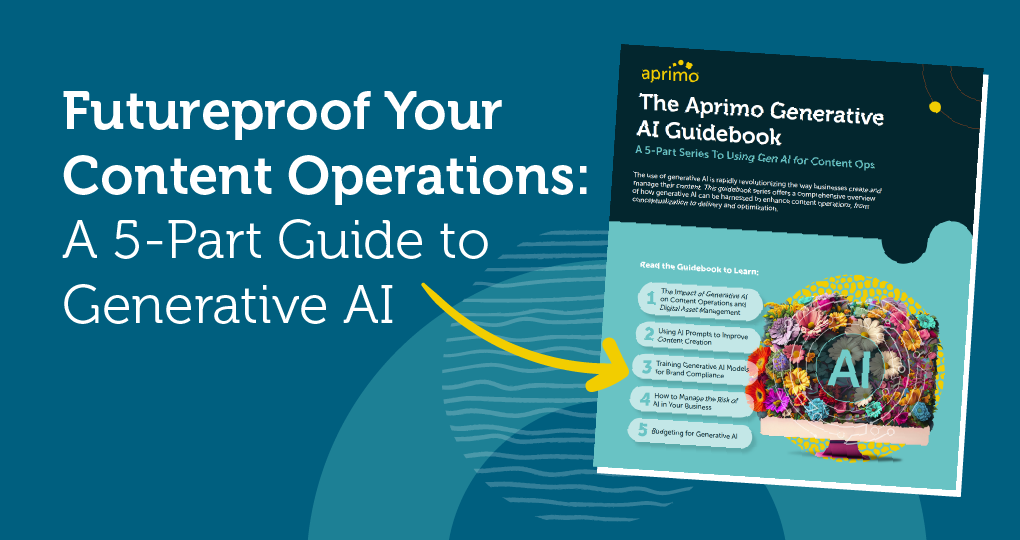DAM Data Delivers: Unveiling the Hidden Insights in Your Digital Assets

Digital asset management (DAM) systems started as a storage solution when organizations needed a centralized location for managing their digital assets. However, with the advent of artificial intelligence (AI) powered analytics, they’ve become much more — a hub of data-driven optimization and creative inspiration for content creation. In this guide, we’ll show you the hidden power of the data in your DAM platform and how you can get the most value from it.

Unlocking the Power of DAM Data
Digital asset management is a structured approach to organizing, storing, and retrieving rich media, such as photos, music, videos, animations, and podcasts, as well as managing digital rights and permissions. Your DAM software functions as a single source of truth and a library for all of your digital content.
The core functionality of a digital asset management system includes asset storage, asset retrieval, and the ability to tag and categorize assets efficiently. Advanced DAM systems also offer features like version control, so you can be sure your teams are always working with the most up-to-date files, and rights management, so you can keep track of where and how assets can be used legally.
In addition to effective storage and retrieval of your digital content, DAM systems can help you improve the ways you use your content. When you understand how to analyze your DAM data, you can see what’s working and what’s not, improve your current content, and create more effective content.
DAM Data Analytics: A Deep Dive
Data analytics with your digital asset management software is the systematic analysis of data generated by the interactions with and around digital assets. This includes everything from when and how often assets are accessed to who is using them and in what context. You can track a wide range of metrics and use this data to make informed decisions.
Here are some useful insights you can glean from DAM data analytics:
-
Usage patterns: By analyzing which assets are accessed most frequently and by whom, you can identify what content is most popular and useful.
-
Engagement metrics: These metrics can include data such as the number of downloads, shares, or the average time spent on a particular asset.
-
Content performance: Learn which assets contribute most to successful marketing campaigns or other organizational goals.
-
Cost efficiency: Analyze the costs associated with creating and managing assets versus their return on investment.
-
Compliance and risk management: Mitigate compliance and legal risks by tracking metrics associated with improper use of assets, such as using an asset beyond its license term.


Enhancing Content Strategy With DAM Data
Marketers need to understand how their content is being used and why. DAM data can help you understand your audience’s preferences and tailor your content accordingly. When you understand which images, videos, or other media types are most frequently accessed or shared, you can identify trends to drive future content creation.
If videos of a certain style are more popular, you can produce more content in that style to increase engagement. DAM data provides a feedback loop where content performance informs future content creation. By continuously analyzing which content performs best, you can adapt your strategy to produce more of what works and less of what doesn’t.
Optimizing Workflow Efficiency
Optimizing workflow efficiency using DAM data allows you to streamline processes and make informed decisions about resource allocation. You can identify bottlenecks and inefficiencies in your content management workflows.
Plaid Enterprises, a leading manufacturer of DIY products, sought a better solution when a surge in consumer interest left their existing content operations systems struggling to keep pace. They were able to identify time-consuming manual processes that slowed down their system and frustrated users.
When they implemented a DAM system with strong classification taxonomy coupled with automation for generating smart descriptions, they were able to significantly cut down on time spent cataloging and searching for assets. The automatic organization of Plaid’s content made asset management more intuitive and efficient. Ultimately, the entire process only took six weeks, and they saved $15,000 in asset migration costs and eliminated the need to purchase a separate product data management system.


DAM Data Security and Governance
Sharing data is, by nature, a security risk. To effectively address data security in DAM involves protecting assets from unauthorized access, breaches, and other cybersecurity threats. The most effective methods follow the NIST Cybersecurity Framework and include measures such as strong encryption methods, secure access controls, and regular security audits.
To promote responsible data usage in DAM systems, you should establish clear governance policies and procedures that define how assets are managed, used, and shared. Start by setting standards and training employees on metadata management, usage rights, and archival processes. Regular monitoring and audits of asset use can help detect and correct any deviations from established policies.
Integration Strategies: DAM and Beyond
You’ll get the most value from your DAM system by combining it with the other tools your teams currently use. Integrating your DAM software with CRM systems, marketing automation tools, and content management systems lets you synchronize digital assets across your organization. Seamless integration maximizes data value, enhancing user experience and driving better decision-making by providing a holistic view of assets in relation to customer interactions and campaign performance.





